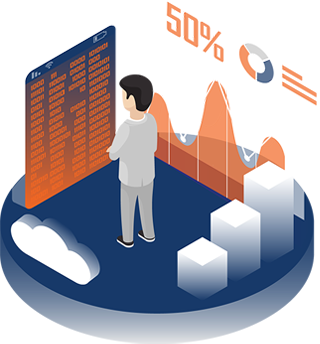
Data Integration
Data integration is the process of combining data from different sources into a single, unified view. Integration begins with the ingestion process, and includes steps such as cleansing, ETL mapping, and transformation. Data integration ultimately enables analytics tools to produce effective, actionable business intelligence.
Integration helps businesses succeed
Business Intelligence (BI) is a set of tools supporting the transformation of raw data into useful information which can support decision making. Business Intelligence provides reporting functionality, tools for identifying data clusters, support for data mining techniques, business performance management and predictive analysis.

Benefit of Services
Business intelligence applications can make use of a comprehensive set of information provided through data integration to derive important business insights from a company’s historic and current data.
- INCREASE YOUR SALESFORCE ROI
- DO MORE WITH FEWER RESOURCES
- INCREASE YOUR COMPETITIVENESS
- IMPROVE YOUR CUSTOMER AND PARTNER RELATIONSHIPS
- BETTER DECISION-MAKING
- INCREASE SYSTEM ADOPTION
What Is Included
With data integration, information is shared seamlessly between systems. Staff can access ERP data in your CRM system and vice-versa. Mistakes are eliminated, everyone in your business has the data they need to perform at their best and you get the best possible value out of the systems you already have.
Big data integration refers to the advanced data integration processes developed to manage the enormous volume, variety, and velocity of big data, and combines this data from sources such as web data, social media, machine-generated data, and data from the Internet of Things (IoT), into a single framework.
Big data analytics platforms require scalability and high performance, emphasizing the need for a common data integration platform that supports profiling and data quality, and drives insights by providing the user with the most complete and up-to-date view of their enterprise.
It is of course possible to report directly against your databases or data source(s). However, there is a point past which data volume, diversity of data sources and other important considerations make it desirable to have a data integration or ETL. If you are a data architect, developer or database administrator, here are some of the questions you need to ask yourself in this regard:
- Is the volume of your data growing noticeably?
- Is your company using an increasing number of data sources?
- Do you need a convenient way to integrate your data across different applications?
- Do you want to find a way to make your data more accurate and easier to understand?
- Are you searching for an efficient way to manage or create a process around your data?
